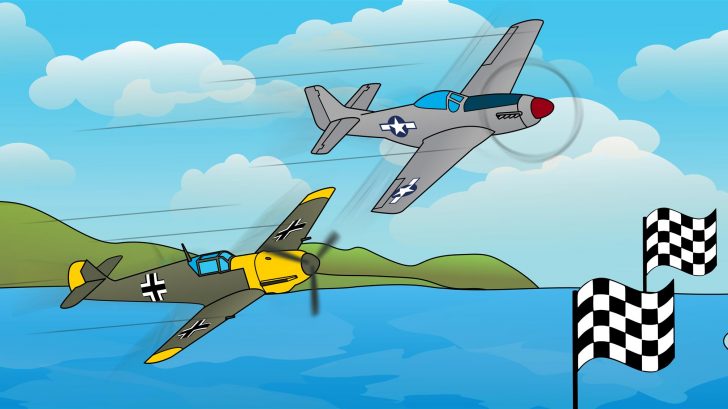There’s nothing sweeter than a marriage between than American design philosophy and British Engineering.
We can all agree to this: The Mustang was the finest mass-produced, piston fighter of the Second World War.
The Mustang P51 and the Spitfire Mark IX were simultaneously baptized in a disastrous Allied loss during the botched Dieppe raid of 1942. But the Allies learned wise and turned the Mustang into a high-altitude escort to the P-51’s during the pivotal Berlin Bombings of March 1944. This mission was widely considered as the finishing touch against a Luftwaffe already fighting desperately for its life.
On the other hand, the Messerschmitt Bf 109 was also a legend in itself and served as the undisputable anchor of the Luftwaffe. In the hands of an experienced pilot, the G-6 variant more than held its own against the Mustang despite yielding a considerable amount of speed advantage. So why was the Mustang much faster than the Bf 109?
The answer lies under the hood.
1. The Mustang’s Merlin Engine could run WAY MORE Manifold Pressure than the Bf 109.
The Bf 109’s engine is 32% larger than the P51’s Merlin Engine, but this fact did not mean that it generated more power because it took in 78% less manifold pressure.
Manifold pressure is the measure of pressure in the engine cylinders, which is controlled by the throttle. Simply put, a higher manifold pressure churns out more power because revving up the throttle opens the engine’s manifold and increases the flow of air/fuel mixture into the engine.
The Mustang’s smaller engine has a more aerodynamic advantage because it could run 75 inches of manifold pressure compared to the measly 42 inches that the Bf 109’s Daimler-Benz engines could take.
2. There Was A Big Disparity in Fuel Quality.
The more an engine knocks during combustion, the more it is likely to overheat and to operate inefficiently.
That’s why fuel with a higher octane number means better ability to resist this knocking and reduced the likelihood of the issues we’ve just mentioned.
The Bf 109 was powered by fuel with Octane Rating of 95, while the P51 ran on fuel with a rating of 150.
3. The Mustang had Dual Superchargers optimized for higher manifold pressures.
The Merlin engine has a supercharger, and that supercharger – in turn- has its own supercharger. As a result, it can be driven at two different ratios of shat speeds: Higher speed for higher altitude, and lower speed for lower altitudes.
This was a glaring advantage over the Bf 109 engine’s Drive System. The latter’s supercharger had a wide range of altitude, compared to the P51’s superchargers that are optimized for high-altitude escort duty.
Because the Drive System was limited to an altitude of 18,800 feet, the manifold pressure significantly dropped once the Bf 109 had exceeded such altitude. Remember, lower manifold pressure meant lower engine power.
The optimal altitude of the Merlin-3 variant was pegged at 17,000 feet at low speed, and an outstanding 28,800 feet at high speed.


